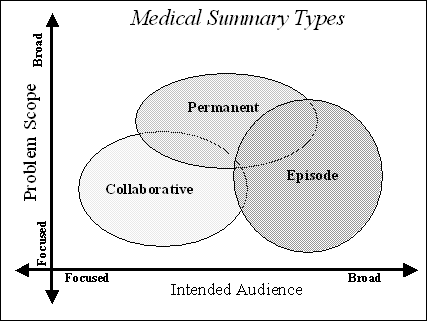PCC TF-1/XDS-MS
Cross-Enterprise Sharing of Medical Summaries (XDS-MS) Integration Profile
Scope and Purpose
Patient, clinician, industry and governmental demands for improved healthcare quality have created increased focus to make patient healthcare information interoperability across disparate systems a reality.
A solution for interoperability is, however, not a simple undertaking. Unstructured textual data forms remains the predominate mechanism for information exchange among health care providers, and a good majority of data needed by physicians and other health care providers to make good clinical decisions is embedded in this free text. Efficient and effective interoperability therefore begins by identifying the most relevant documents and the most relevant sections within those documents.
By their nature, Medical Summaries form a class of clinical documents that contain the most relevant portions of this information. As the name would indicate they have the purpose of summarizing, both abstracting the most important pieces of information from the EMR and recording free-text summaries at the time of medical summary creation. Operationally, they are commonly created at points in time of transfers of care from one provider to another or from one setting to another.
Patient transfers and, therefore, the summary documents that accompany these transfers can be categorized into 3 primary types: Episodic, Collaborative, or Permanent. These categories are important because they represent a breadth of use case scenarios for Medical Summaries. For example, summaries for collaborative transfers of care such as referral notes have a focused objective for providing the most relevant information about the patient intended for a specific provider. Collaborative summaries have a general audience that is generated as an artifact since they also provide the most relevant spot to obtain information about specific classes of patient problems that the patient has.
